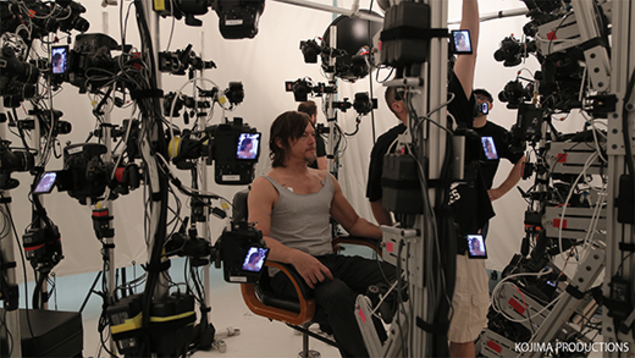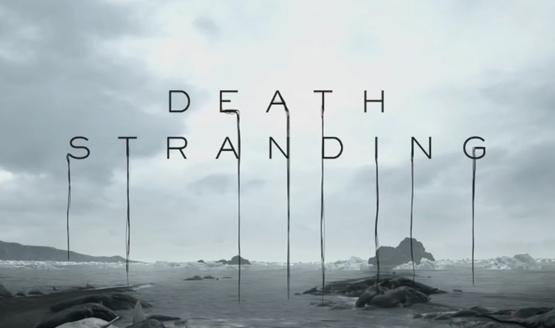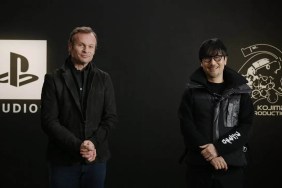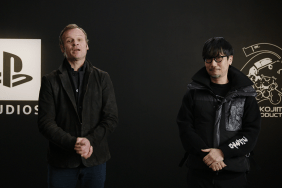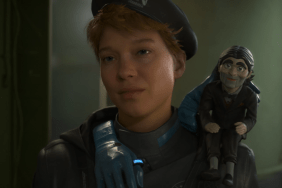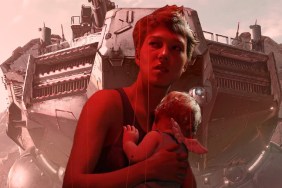It was an entrance befitting of a rockstar. Hideo Kojima, having reportedly endured a trying exit from Konami late last year, walked onto the stage at Sony’s E3 press conference to a wall of noise.
One electrifying burst of the Mad Max: Fury Road soundtrack later — a favorite of the self-proclaimed cinephile, no less — and a hushed excitement washed over those in attendance and, frankly, those like myself who stayed up into the early hours to watch Sony’s keynote live.
Building off the momentum of Kojima’s piecemeal unveiling of the studio’s mascot, Ludens — which, incidentally, bears no connection to the game, but more on that later — and following a brief introduction from the man himself, Kojima Productions’ maiden title lit up the stage.
A Hideo Kojima Game
It’s called Death Stranding, an embryonic action game that heralds a new collaboration with Norman Reedus of The Walking Dead fame, who had previously worked with Kojima on a canned Silent Hill sequel.
Truth be told, in classic Hideo Kojima fashion, there are precious few details for Death Stranding out in the wild, and eagle-eyed fans have poured over each and every frame of the teaser trailer, concocting weird and wonderful conspiracy theories as they go.
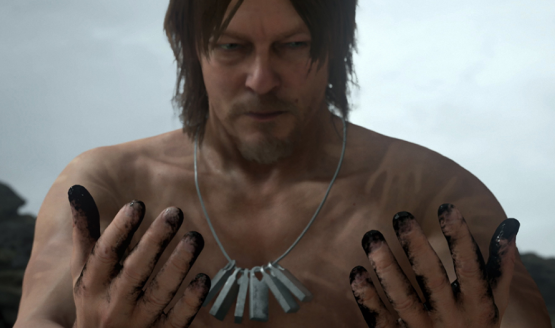
Bearing in mind that Kojima Productions is still in search of an engine, it’s safe to assume that Monday’s trailer was conceptual, teeing up thematic elements and a possible sci-fi setting without straying too far into spoiler territory.
Haunting, surreal, unsettling — all words used to describe Death Stranding’s grand reveal, and few would argue that the snippet in question was a little bit bonkers. Even still, as this is coming from the industry’s master of foreshadowing, there’s certainly a lot to digest.
Auguries of Innocence
First up is an extract from Auguries of Innocence, William Blake’s existential poem that is celebrated for tackling themes of injustice, innocence, and corruption: “To see a world in a grain of sand, and a heaven in a wildflower. Hold infinity in the palm of your hand, and eternity in an hour.”
Opening with a mesmerizing long take, the camera sweeps over a marine graveyard, with scores of dead crabs and other crustaceans littering an ash-grey beach. Next up we see Reedus, cast astray and as naked as his nameday. Sporting a collection of dog tags (locks?) around his neck, our visibly distressed protagonist is attached to a pair of decidedly futuristic handcuffs, with strange (possibly alien?) handprints smeared all over his body.
Tracing a severed umbilical cord to a stranded baby, Death Stranding veers into psychological territory when said embryo vanishes into a pool of thick, oil-like substance smeared over Reedus’ wanting hands — Norman Reedus no longer holding his Norman foetus, as one shrewd Reddit user so aptly put.
Just as Low Roar’s chilling soundtrack nears its crescendo, Reedus stands, surveying a barren, desolate planet — possibly a far-future Earth — that is peppered with rotting corpses. They appear to be stranded; stranded on a world where they don’t belong much like our de facto hero, who casts his eyes to the sky to see five human-esque entities levitating above the lifeless sea.
Cetacean Stranding
Whether they represent some form of divine, God-like beings or advanced humanoids is up for question, but at least in the teaser, said figures appear indifferent to the environmental disaster below, vanishing into the clouds as the Death Stranding logo weaves onto the screen.
It’s all fairly reminiscent of Prometheus; from the stark aesthetic to lingering shots of what we assume to be an alien world. Going one step further, is Hideo Kojima teeing up a scenario in which humanity is subjugated by a civilization more advanced than our own? The cuffs. The eerie handprints. The caesarean scar on Norman Reedus’ body. All signs that suggest that this is a sci-fi world wherein we’re no longer perched at the top of the food chain.
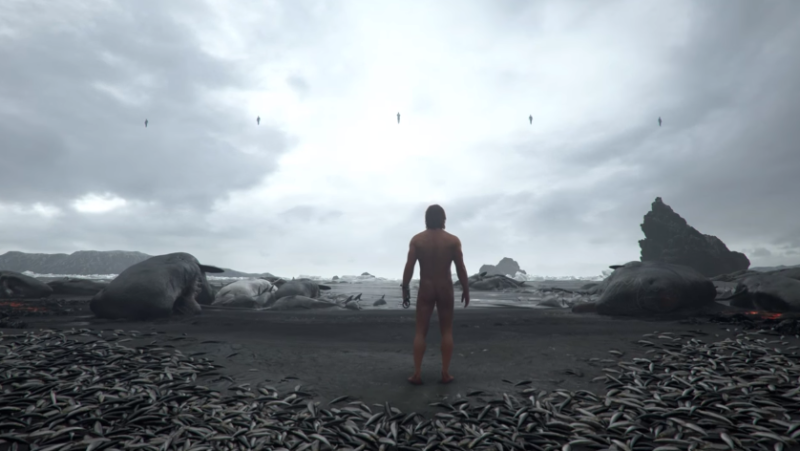
Assuming the vanishing foetus belongs to Reedus — and we’re inclined to believe it does — those five divine figures are bearing witness to the impossible birth. Or, considering that the baby vanishes as quickly as it appears and could be one bat-shit crazy hallucination, it could symbolize a lost world (purgatory, perhaps?). One that’s evidently been replaced by death on all corners. It’s all very apocalyptic — biblical, even, and frankly bloody fascinating.
Without cracking out Roland Barthes’ finest work and delving into the minutia of semiotics, this Death Stranding first-look is crammed with iconography and potential plot points, and Kojima himself said that there are “small things and small messages” littered throughout.
The Schwarzschild Radius
Speaking of which, that rotting marine life is referred to as Cetacean Stranding, a “phenomenon in which cetaceans [marine mammals] strand themselves on land, usually on a beach.” Tragic and unsettling, there are a handful of theories as to why whales would end up washed ashore; perhaps the mammal died at sea and its corpse drifted onto the beach, or a sonar distress signal attracted other whales to the beach, only for them to meet a similar fate.
So, is Kojima implying that Norman Reedus’ character is actually dead? Circling back to the vanishing baby, there is certainly something, ahem, fishy about his whereabouts, and it could well be that our lead is experiencing some form of vivid hallucination. One wild fan theory (via Reddit) is that Reedus has actually slipped into a black hole, with those aforementioned dog tags and/or locks inscribed with formulas for both the The Schwarzschild radius and the The Dirac Equation — scientific equations revolving around general relativity and quantum physics and yep, my head hurts too. Computer, enhance that image!
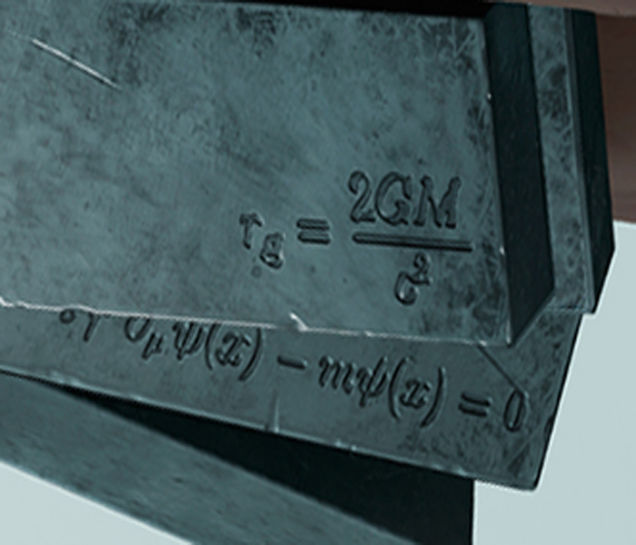
However that may be, let’s recount what we know for certain about Death Stranding. On board with Kojima is Metal Gear Series Designer Kenichiro Imaizumi, while Mark Cerny — Technical Lead on PS4 — is also listed in the credits. But will the pair be helping to steer Death Stranding deep into sci-fi territory? It certainly seems that way.
Alas, if even a fraction of the reported fallout between Kojima and Konami is indeed true, then Monday evening represented vindication for the decorated Game Designer and auteur. This is Hideo Kojima in his true, unshackled form, pushing and pulling at our expectations in a way that few developers can, and it’s only now that we find ourselves under his spell that we realized just how much we missed Kojima’s ingenuity in the first place.
Without an engine to call its own, Kojima Productions’ PlayStation exclusive likely won’t be ready for launch until long into 2019 or possibly 2020. Trust Kojima, then, to have us pouring over each and every frame of a oblique teaser trailer. Until we next hear official word regarding Death Stranding, we’d love to hear your own analysis and wild theories.
Death Stranding PS4
-
Death Stranding
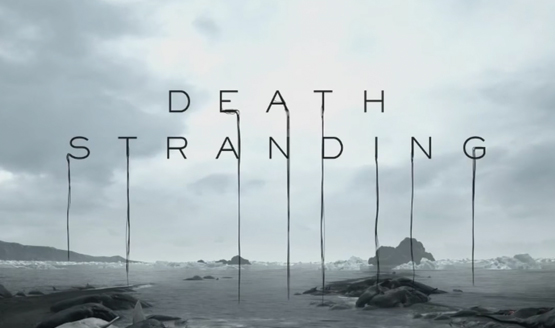
Mark it -- Hideo Kojima is back!
-
Cast Astray
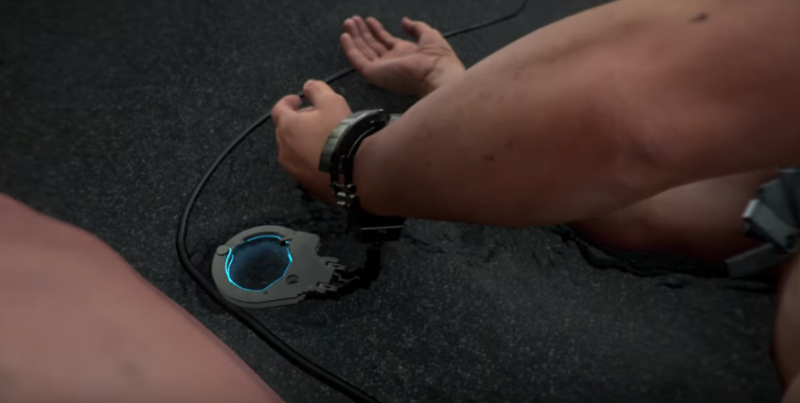
Norman Reedus sporting some very futuristic cuffs. Alien, perhaps?
-
Prometheus, Are You Seeing This?
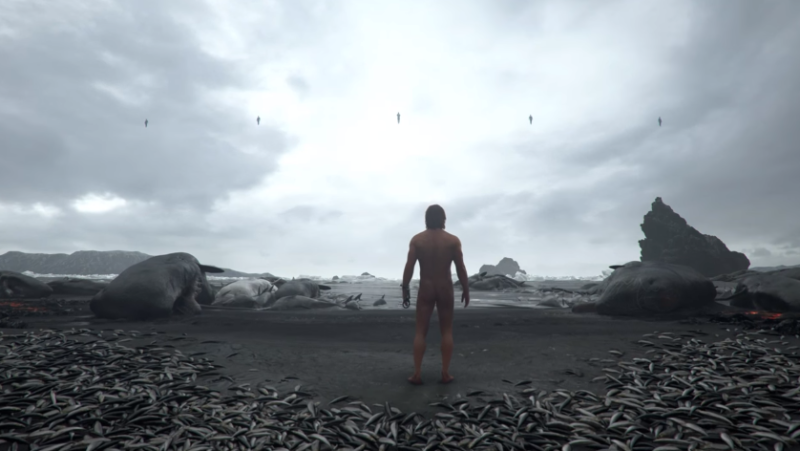
God-like humans (aliens?) loom over the apocalyptic scene with indifference.
-
Death Stranding
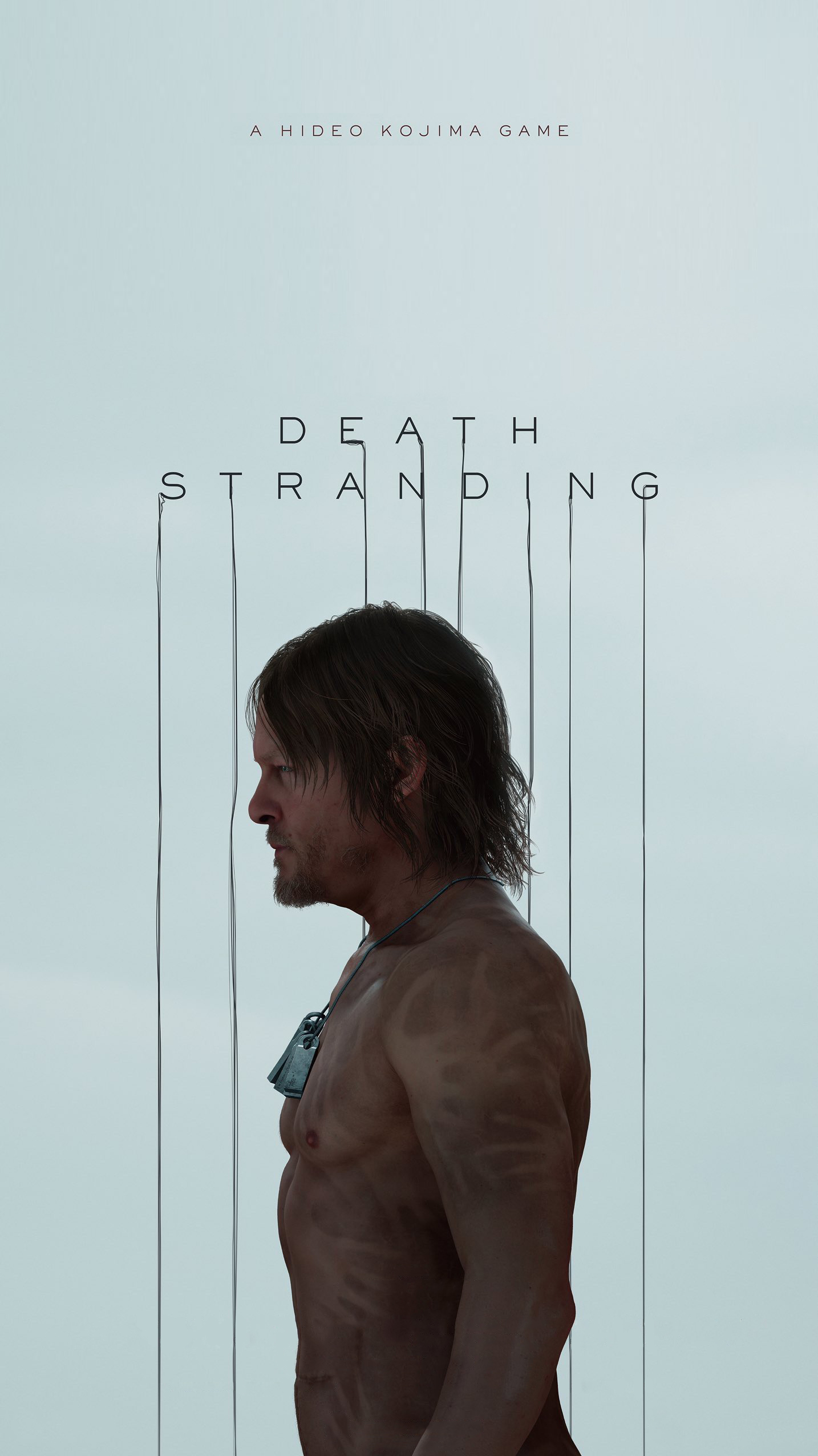
Silent Hills is dead, long live Silent Hills.
-
Dog Tags/Locks

Has Reedus' lead slipped into a black hole? One Reddit user posits that these symbols represents The Schwarzschild radius and the The Dirac Equation.
-
Death Stranding BTS (1)
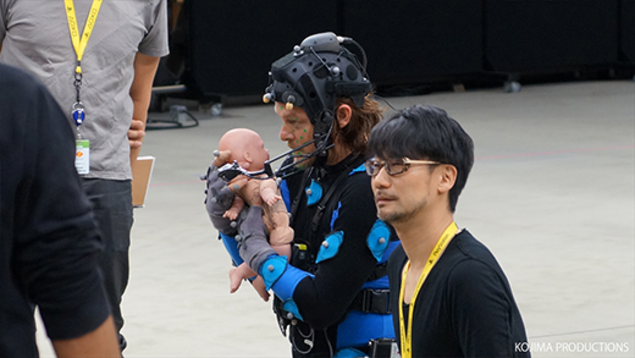
-
Death Stranding BTS (2)
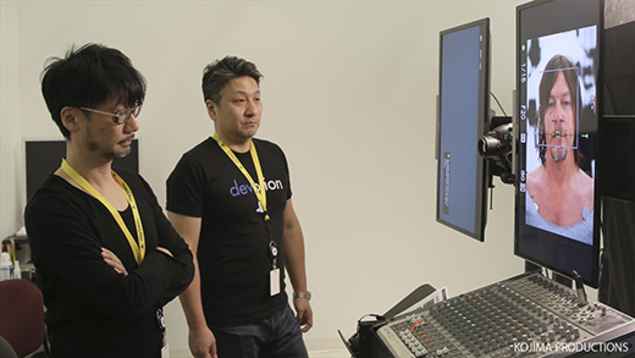
-
Death Stranding BTS (3)
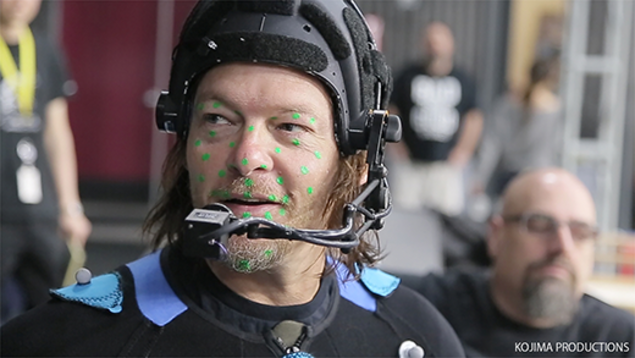
-
Death Stranding BTS (4)
